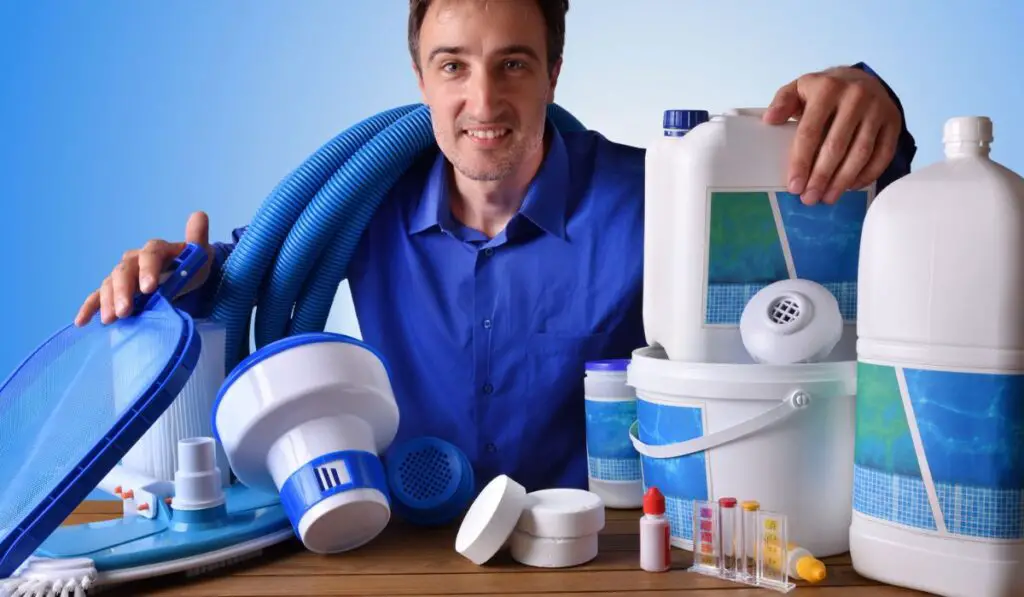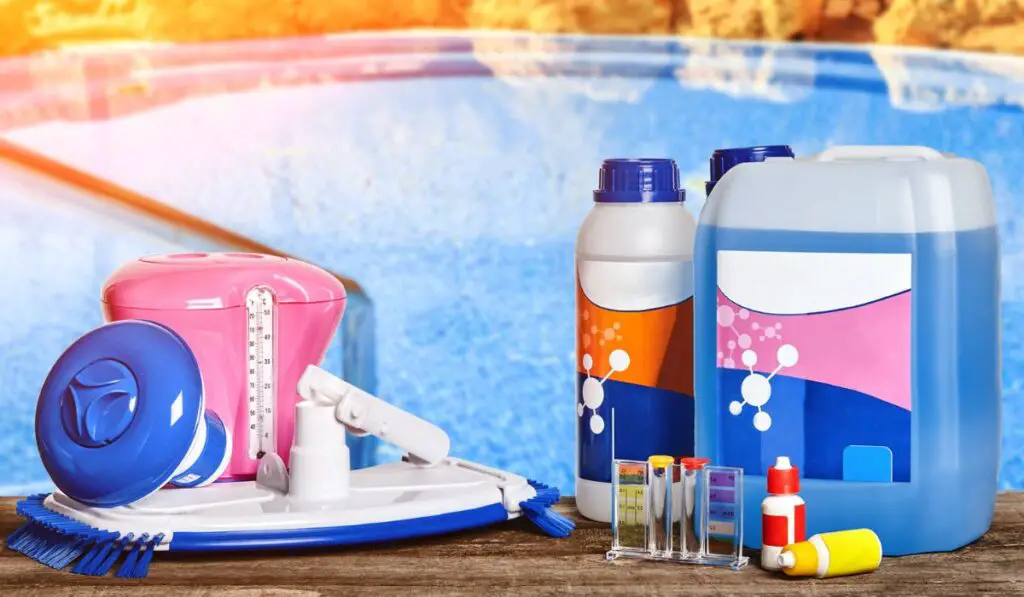Having a pool in the backyard can be a great convenience and lots of fun in the summer. But keeping the chemicals in the pool balanced can also be a lot of work. How do you know when to add a stabilizer to your pool and how much to add?
Pool stabilizer is a necessary chemical required in your pool to protect your chlorine from sunlight. Without a proper stabilizer, your pool can quickly become unhealthy to swim in. Using an online pool stabilizer calculator can help you to find out just how much stabilizer to add to your pool.
Are you wondering what happens when you add too much or too little stabilizer? Let’s look at all the facts about this pool chemical and what you can do to ensure you add the right amount to your pool.
What is Stabilizer?

Pool stabilizers are chemicals that need to be added to your pool in order to keep them pathogen free. Pool stabilizers are usually made of a mix of chemicals that include cyanuric acid and chlorine.
There are many different names for stabilizers depending on the chemicals used. If the main chemical is chlorine but has additional chemicals to stabilize it, it will be sold as stabilized chlorine(on Amazon).
Stabilizers that don’t contain chlorine are often sold as pool conditioner(on Amazon), pool shock treatment(on Amazon), or pool chlorine stabilizer (on Amazon).
Pool stabilizers come in liquid, solid (granules), and tablet form. While it doesn’t really matter what type of stabilizer you use, you do need to decide in advance, so you know how much to add to your pool. Liquid and granule stabilizers are easier to adjust for different pool sizes than tablets.
Most pool owners only need to add stabilizer to their pool once per year, at the beginning of the season. You may need to add more, however, if you allow rainwater to get into your pool or use your pool with a lot of people all summer long.
How Much Pool Stabilizer Should You Add?
The amount of pool stabilizer you need to add to your pool will depend on the pH level of the pool as well as the size of your pool. You will need to use a pool test kit (on Amazon) to find the pH and stabilizer level of your pool before you add any chemicals.
To measure the stabilizer level, you are measuring the amount of cyanuric acid in your pool. Generally, you will want to aim for a stabilizer level between 30-50 ppm for a chlorine pool. If you have a saltwater pool, you need a stabilizer level between 60 and 80 ppm. For hot tubs, the stabilizer level required is much lower, around 30 ppm.
Once you have measured the cyanuric acid levels, you will need to know the volume of your pool. Then you can use a pool volume calculator to calculate how much stabilizer should be added. As a rule of thumb, you should add 4 lbs of cyanuric acid per 10,000 gallons of water when you want to raise your pool by 30 ppm.
A pool stabilizer calculator can help you calculate for different pool sizes as well as when you only want to raise your ppm by 5 or 10 rather than 30.
Keep in mind that solid or granule stabilizer is different from liquid stabilizer. When you put your pool information in the calculator, you will also need to indicate whether you are using a liquid or solid stabilizer, as this will make a difference in your result.
Does Shock Have Stabilizer?
While some pool shock treatments do contain stabilizer, this isn’t a requirement of pool shock treatments. If you find yourself needing to use a pool shock treatment due to algae growth, read the bag of your pool shock treatment to verify whether or not it contains cyanuric acid.
If your pool shock treatment does not contain cyanuric acid, you will need to add some after the shock therapy is complete. Even if you purchase a shock treatment with cyanuric acid, it’s important to test the chemicals in your pool after the shock treatment to ensure they reach normal levels before you swim in your pool.
You may need to add both chlorine and stabilizer after a shock treatment. You may also just need to add one or the other. The only way to find out is by using a pool test kit after the shock treatment is complete.
What Happens if You Have Too Much Stabilizer?
While it might seem easy to add a bunch of stabilizer to your pool to keep it protected, there is actually a downside to adding too much stabilizer. When the stabilizer level is too high in your pool, the cyanuric acid molecules can bind with the chlorine molecules and render them ineffective.
As a result, your pool will become under-chlorinated even though you added both chlorine and stabilizer. This under-chlorination allows bacteria and other germs to flourish, which can make people who swim in your pool ill.
The problem is, once you have added a stabilizer, you can’t remove it from your pool easily. Instead, you will need to drain your pool partially and add more water or purchase a cyanuric acid reducer to remove some of the stabilizer.
What Happens if You Don’t Have Enough Stabilizer?

Without a stabilizer, the chlorine you added to your pool won’t be protected from the sun’s rays. This means that within a few minutes of adding chlorine to your pool, the sun will burn it up and leave your pool unprotected.
When there isn’t any chlorine in your pool, bacteria, and algae are allowed to grow. These substances can quickly make your pool unsafe to swim in as they can spread serious diseases like norovirus, and polio, just to name a few.
The good news is, if you catch that your pool doesn’t have enough stabilizer early on, you can add more before you encounter serious problems. Just be sure you take a measurement using a pool test kit before you add more to prevent yourself from accidentally adding too much.
